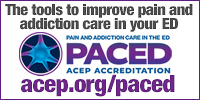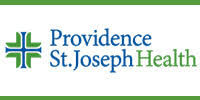- January 1,2020 | ISSN 1940-6967
- The National Association Of Medical Doctors
Featured Sponsors
The Pain Score Must Go. Here’s Why.
By Paul Blackburn, DO
One of the most important purposes of a physician is to alleviate pain and suffering. Pain is the most common symptom prompting an emergency department (ED) visit. Emergency physicians are responsible for managing both acute pain and acute exacerbations of chronic pain resulting from a broad array of illnesses and injuries.
It has been shown that emergency medicine providers are not necessarily good at treating patients uniformly. Since the 1990s, numerous studies of ED pain management have demonstrated that many demographic groups are at risk for inadequate pain control, including the very young, older adults and members of minority ethnic groups.
Coincident with the findings emanating from the Emergency Medicine literature, educational campaigns to promote an increased emphasis on pain assessment and treatment across the breadth of medicine became widespread. Medical providers were strongly encouraged to undergo a paradigm shift and view pain assessment as a “fifth vital sign” alongside the time-honored and proven temperature, pulse, respirations, and blood pressure.
A key driving element was to be the increased emphasis on standardized pain assessment as promulgated by the Joint Commission on the Accreditation of Healthcare Organizations (JCAHO). The result is the currently mandated assessment of pain using the numerical pain scale (NPS). The most commonly used NPS is the “one through ten” rating system. The provider simply asks the patient what their level of pain is on a score of one to ten, with “zero” being no pain and “ten” being the worst pain they have ever experienced.
Pain scales are necessary and valuable tools in research. Many extensively studied and validated scales that accurately reflect a person’s pain are readily available. They allow the study of pooled data that can be comparably assessed across a group of individuals. However, they are not usually practicable in an acute care setting due to the time and effort required to complete them. Cumbersome as compared to the NPS, which is simply one asked question. The NPS is not completely without value in clinical medicine, though. In chronic pain management, an individual’s NPS could be used as a personal barometer of therapy effectiveness.
The numerical pain scale is an entirely subjective assessment by the patient and is, therefore, inherently influenced by the individual’s biases, whether they be personal, cultural, or societal. And the skeptic would also consider the influences of unspoken agendas and secondary gain.
A classic parody of the inaccuracy and unreliability of the NPS in acute care is demonstrated by the dilemma faced by comedian Brian Regan. One day requiring emergency department treatment, he was asked his pain score. Great angst ensued. He didn’t want to offer a low number and risk no treatment. On the other hand, he didn’t want to say a high number, because they were reserved for such conditions as childbirth. He finally blurted “eight” and was surprised – no, delighted – to receive morphine. Upon discharge, he felt obligated to tell everyone in the waiting room to “Say eight! Say eight!”
But there are always unintended consequences. With JCAHO efforts stressing the importance of recognition and treatment of pain, pharmacologic treatment became emphasized. This clinical trend was paralleled by aggressive pharmaceutical marketing efforts. The opioid-centric nature of this change became evident as the number of opioid medications prescribed rose dramatically. Levels of opioid prescribing peaked in 2010, then began to decline. But as of 2015, prescribing remained three times higher than 1999. In 2017 the US ranked number one globally in the consumption of prescription opioids, with a per capita consumption two to three times that of European countries.
No one can disagree with the importance of accurate, equitable pain assessment and treatment. One should, however, question the very nature of the numerical pain scale as a clinical gauge in the acute care setting due to its complete subjectivity. Some have argued that it has even proven detrimental to patient care as a contributing factor to our ongoing opioid crisis.
However, the numerical pain scale’s tenure as a “fifth vital sign” and guideline to acute care pain management remains inaccurate and unhelpful, at best. It is an instance when nothing is better than something. It is time for this pain scale to go away.
Articles in this issue:
Top Physician Opportunities
Journal of Medicine Sign Up
Get the Journal of Medicine delivered to your inbox.
In This Issue
Archives
Masthead
-
- Editor-in Chief:
- Theodore Massey
- Editor:
- Robert Sokonow
- Editorial Staff:
- Musaba Dekau
Lin Takahashi
Thomas Levine
Cynthia Casteneda Avina
Ronald Harvinger
Lisa Andonis
Leave a Comment
Please keep in mind that all comments are moderated. Please do not use a spam keyword or a domain as your name, or else it will be deleted. Let's have a personal and meaningful conversation instead. Thanks for your comments!















*This site is protected by reCAPTCHA and the Google Privacy Policy and Terms of Service apply.